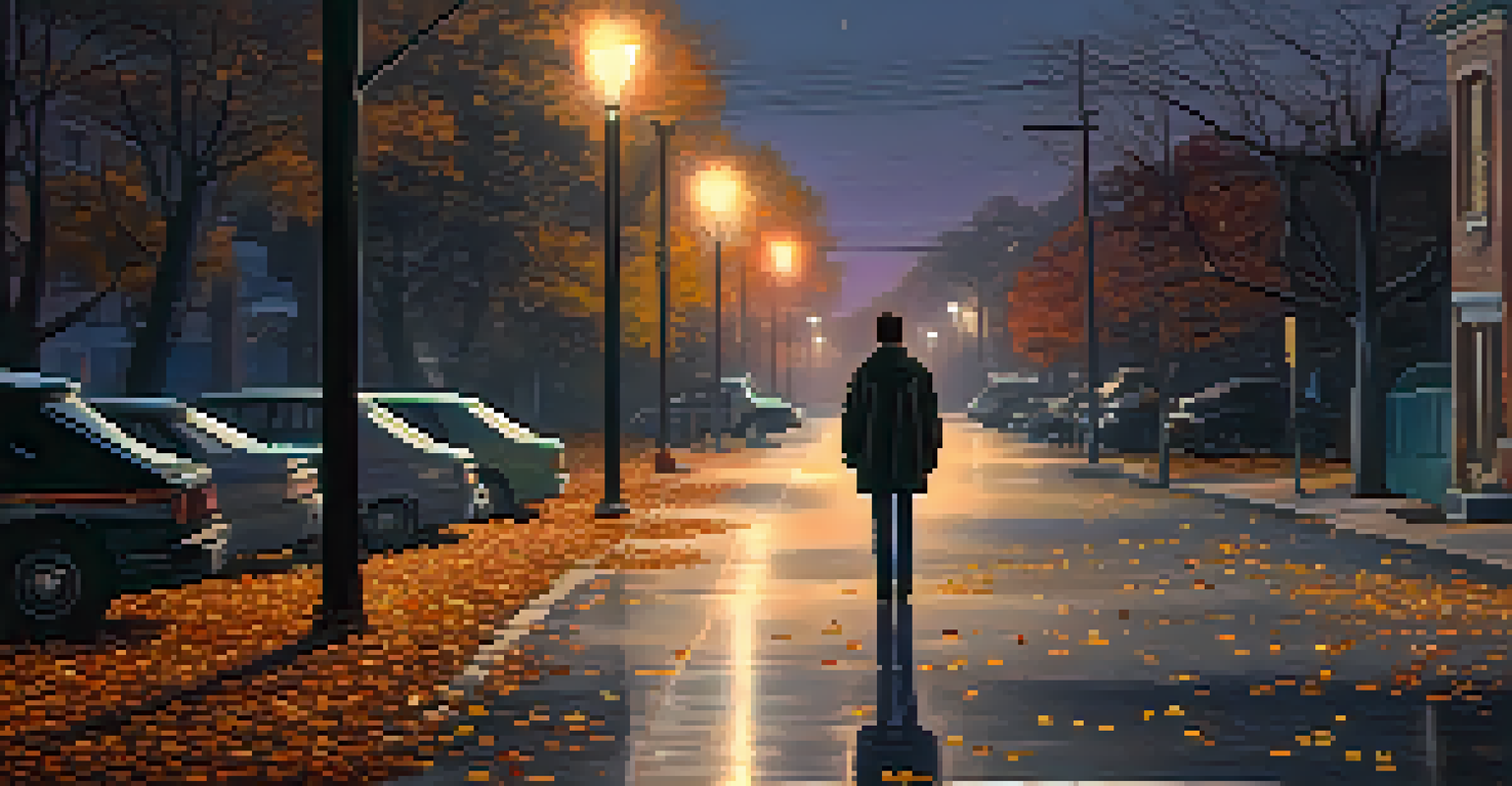The Use of Silence: When Less is More in Film Music

Understanding the Role of Silence in Film Music
Silence in film music often serves as a powerful storytelling tool. It creates space for emotions to breathe and allows the audience to absorb what they have just experienced. By intentionally choosing when to omit music, filmmakers can highlight pivotal moments, making them more impactful.
Silence is a source of great strength.
For instance, think about scenes where characters face life-changing decisions. The absence of music can amplify the tension and focus the viewer's attention on the character's internal struggle. This technique draws the audience deeper into the narrative, making them feel more connected to the characters.
Ultimately, silence is not just the absence of sound; it's a strategic choice that can evoke powerful feelings and reactions. When used effectively, it can turn a simple scene into a memorable cinematic experience.
Historical Examples of Silence in Film
Many iconic films have utilized silence to great effect, showcasing its potential for emotional depth. One notable example is Alfred Hitchcock's 'The Birds,' where the eerie absence of a musical score creates an unsettling atmosphere. The silence amplifies the tension, making the viewer feel the impending doom without any distraction.

Another classic example is the film 'No Country for Old Men.' The sparse use of music, particularly during tense sequences, allows the unsettling sounds of the environment to take center stage. The silence accentuates the film's themes of existential dread and moral ambiguity, immersing the audience in its bleak world.
Silence Enhances Emotional Impact
Silence serves as a potent storytelling tool, allowing audiences to connect deeply with characters and their emotions.
These films illustrate how silence can be just as powerful as a full orchestral score, often leaving a lasting impression on viewers long after the credits roll.
Silence as a Tool for Building Tension
In film, silence can be a masterful tool for building tension. By reducing sound, filmmakers can create a palpable sense of anticipation, keeping the audience on the edge of their seats. This technique is often employed in horror films, where a sudden silence can signal an impending scare.
In the end, we will remember not the words of our enemies, but the silence of our friends.
Take the classic horror film 'A Quiet Place,' for example. The characters must remain silent to survive, and the film's sparse soundscape heightens the tension with every quiet moment. The audience is left straining to hear even the smallest sounds, making every noise feel significant.
This strategic use of silence not only creates suspense but also enhances emotional engagement, making viewers feel the weight of each moment.
Silence and Character Development
Silence can also play a crucial role in character development within a film. Moments of silence can reveal a character's internal conflicts, allowing the audience to connect with their emotional state. For instance, a character sitting in silence after a significant loss can convey grief more effectively than any dialogue.
Think about the film 'Manchester by the Sea,' where quiet moments are interspersed with emotional turmoil. The silences between characters often speak volumes about their relationships, revealing unspoken feelings and regrets. This use of silence encourages viewers to reflect on the complexities of human emotion.
Silence Builds Tension Effectively
Strategic use of silence can create anticipation and suspense, particularly in genres like horror, keeping viewers on the edge of their seats.
Thus, silence becomes a canvas on which character depth is painted, inviting audiences to explore the subtleties of the narrative.
Using Silence to Enhance Sound Design
Silence can serve as a backdrop that makes other sounds more striking. When filmmakers create moments of silence, they can draw attention to specific sound effects or dialogue, enhancing their impact. This technique is often used in action films, where a sudden silence before an explosion can amplify the shock of the moment.
For example, in 'Dunkirk,' the use of silence amid the chaos of war allows the sounds of gunfire and explosions to hit harder. When the music fades out, the audience is left with the raw, visceral sounds of battle, creating a more immersive experience.
By strategically placing silence, filmmakers can manipulate the audience's emotional response, making the sounds that do exist feel more significant.
Silence as a Reflection of Real Life
In real life, silence often carries deep meaning, and filmmakers can use this to reflect the human experience. Just as we experience moments of quiet in our lives, films can mirror this reality, creating a more relatable narrative. These pauses can evoke feelings of loneliness, contemplation, or even peace.
Consider a scene where a character reflects on their life choices in silence. This moment allows the viewer to empathize and connect with the character's journey, making their experiences feel more authentic. It’s in these quiet moments that audiences can often find themselves and their own stories.
Silence Reflects Real-Life Experiences
Incorporating silence in film mirrors the meaningful pauses of everyday life, making narratives more relatable and profound.
By incorporating silence, films can foster a deeper understanding of the human condition, making the narrative resonate on a personal level.
Conclusion: The Art of Using Silence in Film Music
In conclusion, silence is a powerful element in film music that can enhance storytelling in profound ways. Whether it's building tension, developing characters, or reflecting real-life experiences, silence allows filmmakers to create a more engaging and emotionally resonant experience. Understanding when to embrace silence can elevate a film from ordinary to extraordinary.
As audiences, we must recognize the artistry behind these choices and appreciate the moments of quiet that speak volumes. The next time you watch a film, take note of the silences and how they shape your experience; you might discover new layers of meaning.

In the world of film, sometimes less truly is more, and silence can be the secret ingredient that brings a story to life.